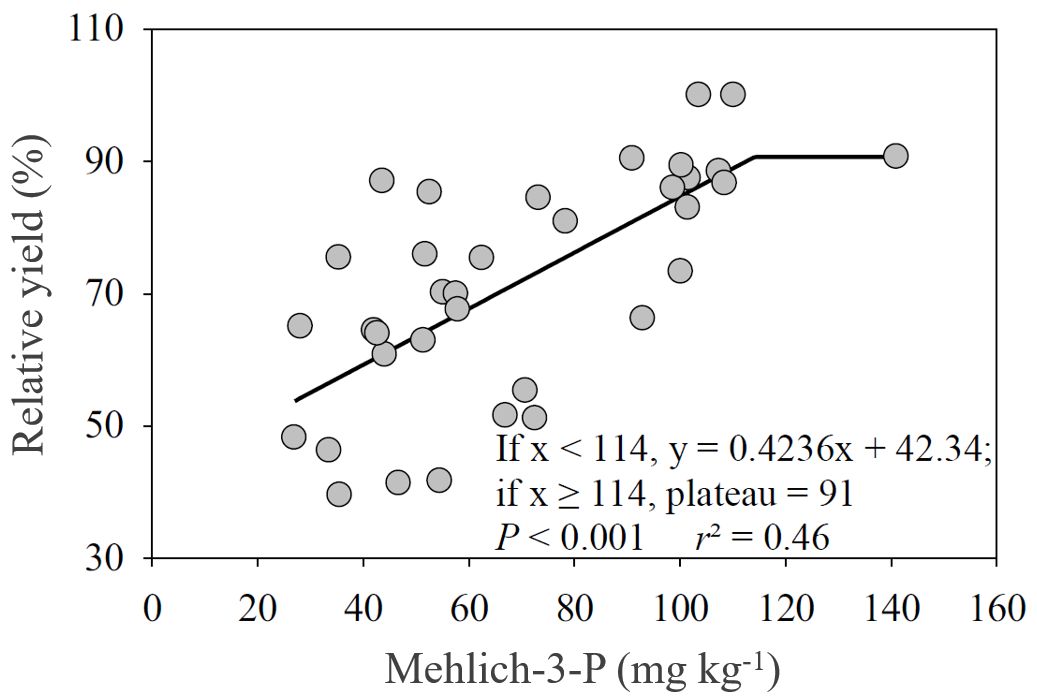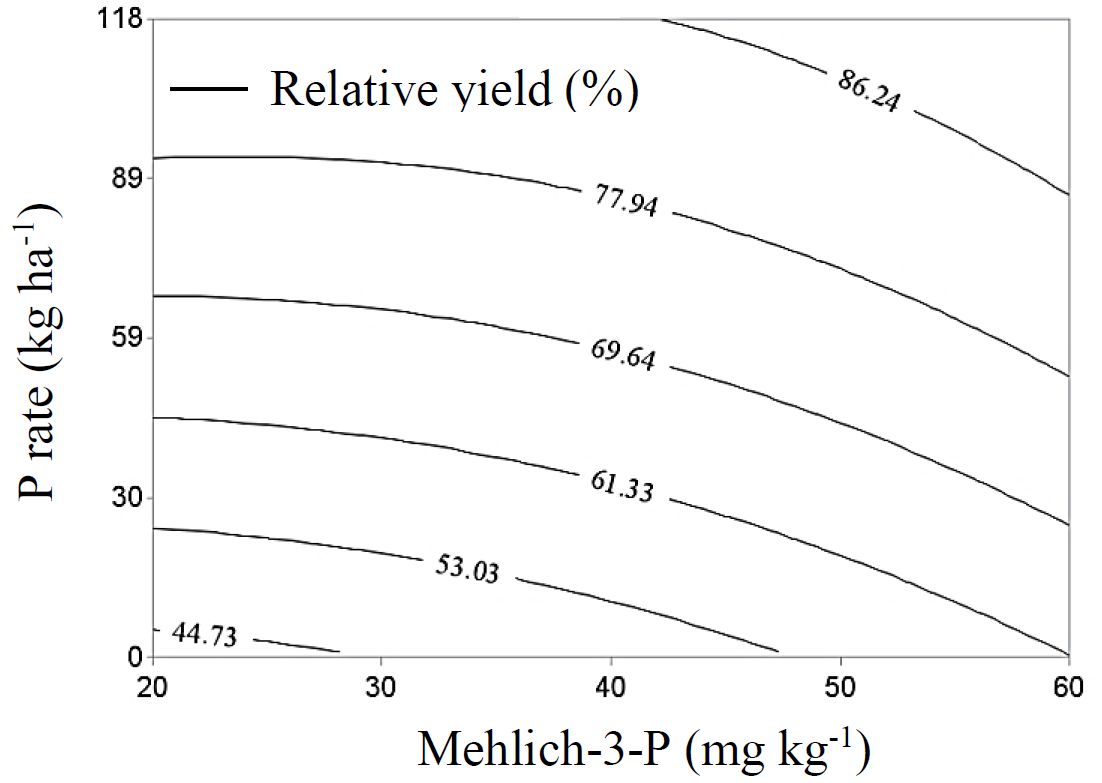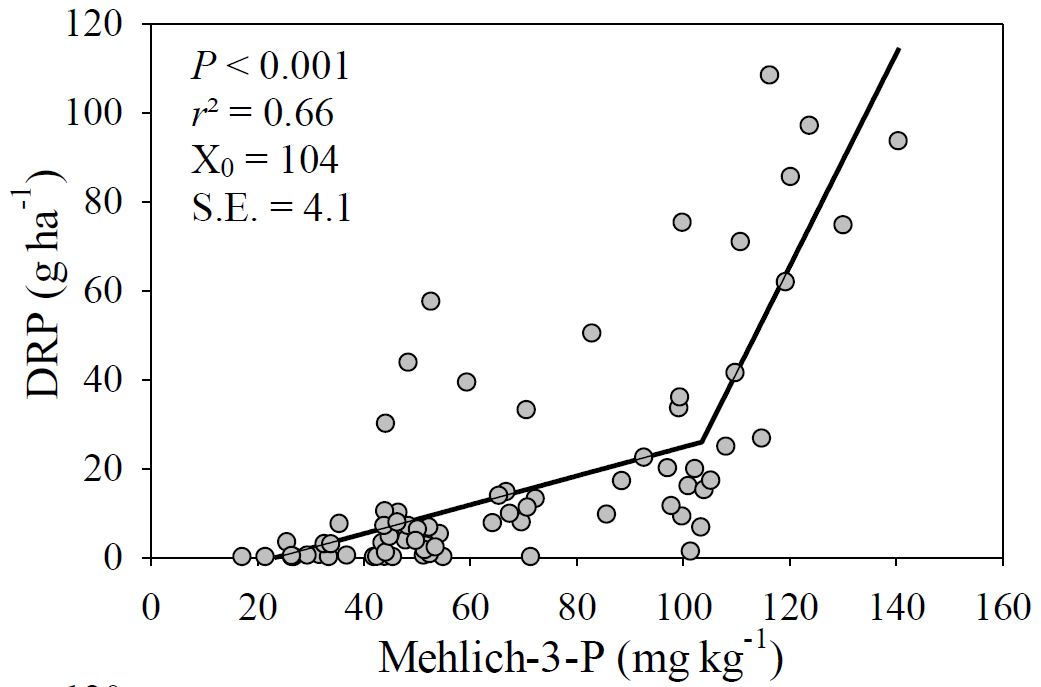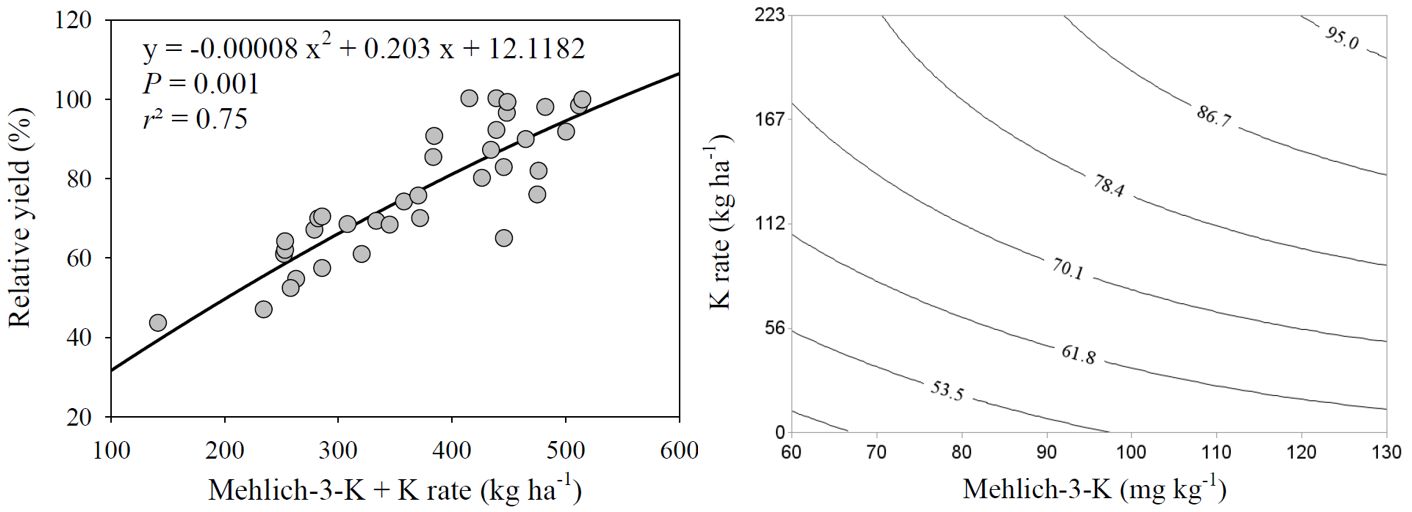Nutrient Management Recommendations Based on Mehlich-3 Extractant for Calcareous Soils in Miami-Dade County
This publication provides information about the history of soil testing calibrations and justification for recommending soil nutrient extraction, via the Mehlich-3 extractant, for calcareous soils in Miami-Dade County. By definition, calcareous soil has an abundance of calcium carbonate. The dominant soils in Miami-Dade County fall into this category, resulting in high pH levels. This document also includes the University of Florida’s Institute of Food and Agricultural Sciences (UF/IFAS) approved Mehlich-3 extractant-based testing interpretations and recommendations for these soils. This publication intends to elucidate an appropriate approach for analyzing the unique calcareous soils from Miami-Dade County for plant available nutrients. The target audiences of this document are Extension agents, agronomists at soil testing laboratories, crop advisors, growers, state and local agency representatives, and others concerned about soil testing and plant analysis in Miami-Dade County.
Calcareous Soils in Miami-Dade County
Calcareous soils contain 1%– 90% lime material as calcium carbonates (SSSA 2021). Soils in Miami-Dade County have a carbonate equivalent of 3%–94%, with pH ranging from 7.3 to 8.2 (Zhou and Li 2001). Calcareous soils in Miami-Dade are derived from Miami oolite limestone. The soils are categorized into two groups: marl soil and rocky or gravelly soil (Li 2018). Marl soils cover low-lying lands in south Florida, mainly in Miami-Dade and Monroe Counties, including parts of Everglades National Park. Most of the marl soils in Miami-Dade County have been artificially drained and cultivated to produce winter vegetables, field-grown ornamental crops, and some tropical fruit. Gravelly soils have a higher elevation (about 5 ft.– 20 ft. above sea level) than areas where marl soils are found. Gravelly soils were created in rocky pinelands by rock plowing, a process employed to crush the oolitic limestone bedrock with a scarifying plow front-mounted on a large bulldozer. These soils are suitable for any crops, including tree crops, for which growers often created intersecting trenches (10 in.–24 in. deep) (Colburn and Goldweber 1961).
History of Soil Testing Calibration in Miami-Dade County
Extraction with Water
Due to the unique properties of calcareous soils, soil nutrient extraction methods used to test these soils in Miami-Dade County have always differed from those used for sandy and organic soils in other regions of Florida. A water extraction method developed by horticulturists in the early 1960s was used for several years for Miami-Dade soils. In 1963, Dr. B. Llewellen developed an informational leaflet titled Suggested Soil Nutrient Levels (Water Extraction); but this guide was not supported by field calibration data. The Dade County Extension Soil Laboratory Director, Dr. J. D. Dalton, stated that the fertilizer recommendations for growers were based on the results of the water extraction method and his own personal experience (Hanlon et al. 1999).
Extraction with AB-DTPA
Florida adopted Mehlich-1 (diluted double-acid) as its official extractant for acid-mineral soils in the 1970s. This method has been ineffective for calcareous soils because the weak acidity of the extractant can easily be neutralized by high-pH calcareous soils. Therefore, efforts continued to identify an effective, different extractant for calcareous soils. Hanlon et al. (1996) conducted field trials from 1991 to 1992 in Miami-Dade County on tomato to evaluate the Ammonium Bicarbonate-Diethylene Triamine Pentaacetic Acid (AB-DTPA) extraction—hoped replacement for ambiguous water extraction. In 1994, soil testing calibration was expanded to include other vegetable crops such as malanga, sweet corn, potato, green bean, and tomato under the project funded by FDACS and SFWMD, addressing the crop nutrient requirements (CNR). Additional experiments that addressed fruit crops and vegetables with water quality components were also conducted from 1995–1997 (University of Florida, Crop Nutrient Requirements, 2017). Data from these projects showed the proposed AB-DTPA extractant often correctly identified soils for vegetable production in the high phosphorus (P) range (Figure 1).

Credit: Lamberts and O’Hair, UF/IFAS
In 1998, UF/IFAS Extension state specialists and agents reviewed vegetable fertilization recommendations for Miami-Dade County as the newly formed Working Group for Miami-Dade County Soil Testing. In 1999, this group recommended the adoption of AB-DTPA as the extracting method for soil P in Miami-Dade County. The UF/IFAS Plant Nutrient Oversight Committee (PNOC) approved the recommendation; its proposed P interpretation scale for the AB-DTPA extractant for calcareous soils is presented in Table 1 (Hanlon et al. 1999). Ranges are based on Soltanpour (1991) and verified with data from the CNR project. This soil testing interpretation was added to UF/IFAS Standardized Fertilization Recommendations and used by the UF/IFAS Extension Soil Testing Laboratory (ESTL). A note was added to the reports of soils with high pH stating:
This soil has been determined to be calcareous in nature. Previous research studies had shown that only the Ammonium Bicarbonate-DTPA (AB-DTPA) extraction method had limited field calibration for soil P. No calibrations, however, were possible for any other nutrients. Therefore, only P recommendations will be provided solely for successful crop performance and yields. Efforts are being made to conduct research studies to identify an alternate improved extraction method, and the interpretations and nutrient recommendations may be modified after subsequent field calibration and validation.
However, the AB-DTPA extraction was not calibrated for soils with AB-DTPA extractable P less than the interpretation scale (10 ppm) due to a lack of experimental sites with low soil P. Further, no plant nutrients other than P could be interpreted for crop requirement using this extraction method.
Table 1. Proposed P interpretation scale for the AB-DTPA extractant for calcareous soil (Hanlon et al. 1999).
Extraction with Mehlich-3
A statewide research project had intended to calibrate soil test interpretations and develop nutrient recommendations for major commodities grown across Florida (Florida Department of Agriculture and Consumer Services & University of Florida 2018). Contributing to it from 2014–2016, we conducted a 2-year field trial with tomato grown in a calcareous soil with low background P in Homestead, FL. This study compared three extraction methods (AB-DTPA, Olsen, and Mehlich-3) for soil P and potassium (K). (The results are detailed in the following section.) We concluded that the Mehlich-3 extraction method should replace the AB-DTPA method, and our recommendation was approved by the PNOC in 2020.
Soil Test Calibration with Mehlich-3 for Calcareous Soils in Miami-Dade County
Soil test calibration experiments for calcareous soils were conducted in Homestead, FL from 2014 to 2016 (Figure 2). Since these new projects were based on previous CNR projects conducted in Miami-Dade County from 1991 to 1997, it was critical that the new ones also included soil with low or medium ranges of P nutrient. Twenty-one soil samples were collected from the research farm at the UF/IFAS Tropical Research and Education Center (UF/IFAS TREC) with Mehlich-3 extractable P ranging between 8.6 and 135.7 mg/kg (ppm), AB-DTPA extractable P between 3.5 and 39.6 mg/kg (ppm), carbonate contents between 23.7% and 64.5%, and soil pH between 7.7 and 8.3 (Zhu et al. 2016). Based on the above Mehlich-3 P and AB-DTPA-P values, a grassland area was selected for the field trial. Grasses and weeds were removed, and soils were plowed multiple times before six rates of P2O5—0, 60, 100, 160, 200, and 240 lb/acre—were applied in two bands (6 inches from the center of bed and 3 inches deep).

Credit: Qiang Zhu, UF/IFAS
Calibration of Mehlich-3 Extractable P
Soil test P was calibrated, keeping both agronomic and environmental aspects in mind. For agronomic calibration, the split-line model written below was used to predict the Mehlich-3 extractable P required to achieve the expected yield of tomato (Figure 3) (Zhu et al. 2017b).
- If x < 114, y = 0.4236 x+42.3411
- If x ≥ 114, plateau = 91
Y is the relative yield (%), and x is Mehlich-3 extractable P. According to the above equation, the critical levels of Mehlich-3 extractable P for 75% relative yields were 77 mg/kg (ppm).

Credit: Zhu et al. (2017b)
The P fertilizer application rate was predicted using a multiple regression model developed by Zhu et al. (2019):
y = 41.89 + (-0.125x) + (0.516z) + (0.007x2) + (-0.0009z2) + (-0.0025xz)
Y is the relative yield (%); x is Mehlich-3 extractable P; and z is the P fertilizer application rates (Figure 4). For example, according to the above equation with the preplant Mehlich-3 extractable P at 77 mg/kg (ppm), the P application rates to achieve 90% and 100% relative yields were determined to be 60 and 125 kg/ha (equivalent to 54 and 112 lb/acre), respectively.

Credit: Zhu et al. (2019)
For the soil test calibration with environmental consideration, the split-line model was used to predict the critical value or change point (x0) of Mehlich-3 extractable P for producing significant leaching of P from the root zone (Figure 5) (Zhu et al., 2019). The change point was predicted to be 104 mg/kg (ppm) Mehlich-3-P, which was similar to the change point of 100 mg/kg (ppm) Mehlich-3-P reported previously by Pizzeghello et al. (2016).

Credit: Zhu et al. (2019)
Calibration of Mehlich-3 Extractable K
The soil K test results were calibrated using only an agronomic approach because there is no current environmental concern with K. Relationships among relative yield, Mehlich-3 extractable K, application rates of K, and total available K (preplant Mehlich-3 extractable soil K plus full‐season applied K rate) were established using a simple regression model and a multiple regression model (Zhu et al., 2017a, 2017d). The polynomial regression model was used to predict the values of Mehlich-3 extractable K required for achieving the expected yield (Figure 6):
y = -0.00008 x2 + 0.203x + 12.1182
Y is the relative yield (%), and x is the total K input (preplant Mehlich-3 extractable K plus full‐season applied K rate). According to the above equation, the low and medium levels of Mehlich-3 extractable K were 85 and 150 mg/kg (ppm), respectively.
The K application rate can be predicted using a multiple regression model developed by Zhu et al. (2017a):
y = 14.84 + (0.57x) + (0.19z) + (-0.0018x2) + (-0.00036z2) + (0.0005xz)
Here, y is the relative yield (%); x is preplant Mehlich-3 extractable K in mg/kg; and z is the K application rates in kg/ha (Figure 6). For example, according to the above equation, with the preplant Mehlich-3 extractable K at 85 mg/kg (ppm), the K application rates for achieving 95% relative yields is 158 kg/ha (141 lb/acre).

Credit: Zhu et al. (2017a)
Updated Soil Test Interpretations for Calcareous Soils in Miami-Dade County
In 2020, the PNOC approved Mehlich-3 as the soil extractant for the calcareous soils in Miami-Dade County, and the corresponding interpretation for these soils is shown below (Table 2). The UF/IFAS Extension Soil Testing Laboratory has now adopted Mehlich-3 and the recommendation as the standardized protocols for calcareous soils of Miami-Dade County, Florida. Application rates of nitrogen, phosphorus, and potassium fertilizers for vegetable and ornamental crops grown on calcareous soils in Miami-Dade County will be the same as the current recommendations for acid-mineral soils for the same level of each Mehlich-3 extractable phosphorus and potassium. Developing recommendations for application rates of nitrogen, phosphorus, and potassium fertilizers for tropical fruits is in progress and will be published in a separate factsheet soon.
Table 2. Soil test interpretation for Mehlich-3 extraction for agronomic and horticultural crops and landscape plants grown on calcareous soils in Miami-Dade County.
References
Colburn, B., and S. Goldweber. 1961. “Preparation of Oolitic Limestone Soil for Agricultural Use.” Proceedings of the Florida State Horticultural Society 74: 343–345.
Florida Department of Agriculture and Consumer Services & University of Florida. Calibration of Soil Test Interpretations and Nutrient Recommendations for Major Commodities Grown across Florida as Best Management Practice for Sustainable Agriculture. Mylavarapu, R., G. Hochmuth, V. Nair, A. Wright, J. McCray, and Y. C. Li. Final Report, Grant Contract # 024018. 2018. https://ccmedia.fdacs.gov/content/download/79027/file/24018_Del_2.pdf
Hanlon, E. A., B. Schaffer, M. Ozores‐Hampton, and H. H. Bryan. 1996. “Ammonium Bicarbonate‐DTPA Extraction of Elements from Waste‐Amended Calcareous Soil.” Communications in Soil Science and Plant Analysis, 27(9-10): 2321–2335. https://doi.org/10.1080/00103629609369706
Hanlon, E. A., G. J. Hochmuth, S. O’Hair, Y. C. Li, H. Bryan, M. Lamberts, T. Olczyk, and J. Crane. 1999. “Development of Calcareous Soil Testing and Recommendation System.” Calcareous Soils Position Paper, University of Florida, Gainesville, FL.
J. R. Heckman. 1997. Soil Fertility Test Interpretation: Phosphorous, Potassium, Magnesium, and Calcium. Rutgers Cooperative Extension: FS 719. https://njaes.rutgers.edu/pubs/publication.php?pid=fs719
Li, Y. 2001. “Calcareous Soils in Miami-Dade County: SL 183/TR004, Rev. 10/2018.” Ask IFAS 2018 (5). http://edis.ifas.ufl.edu/TR004
Mylavarapu, R., Y. Li, M. Silveira, C. Mackowiak, and J. M. McCray. 2021. Soil-Test-Based Phosphorus Recommendations for Commercial Agricultural Production in Florida: SS699/SL 486, 2/2021.” EDIS 2021 (1). https://doi.org/10.32473/edis-ss699-2021
Pizzeghello, D., A. Berti, S. Nardi, and F. Morari. 2016. “Relationship Between Soil Test Phosphorus and Phosphorus Release to Solution in Three Soils after Long-Term Mineral and Manure Application.” Agriculture, Ecosystems, & Environment 233 (3):214–223. https://doi.org/10.1016/j.agee.2016.09.015
Sims J. T., R. O. Maguire, A. B. Leytem, K. L. Gartley, and M. C. Paulter. 2002. Evaluation of Mehlich-3 as an Agri-Environmental Soil Phosphorus Test for the Mid-Atlantic United States of America. Soil Science Society of America Journal 66: 2016–2032. https://doi.org/10.2136/sssaj2002.2016
Soil Science Society of America (SSSA). 2021. Glossary of Soil Science Terms. https://www.soils.org/publications/soils-glossary
Soltanpour, P. N. 1991. “Determination of Nutrient Availability and Elemental Toxicity by AB-DTPA Soil Test and ICPS.” In Advances in Soil Science, edited by B. A. Stewart, 165–190. Vol. 16. New York: Springer-Verlag. https://doi.org/10.1007/978-1-4612-3144-8_3
University of Florida. Crop Nutrient Requirements for Vegetable Crops on Limestone Soils of South Florida. Lamberts, M., S. O’Hair, G. Hochmuth, E. Hanlon, and H. Bryan. Final Report, Grant Contract # C-4225. UF/IFAS Tropical Research and Education Center, 1997.
Zhang, H., S. Kaiuki, J. L. Schroder, M. E. Payton, and C. Focht. 2009. “Interlaboratory Validation of the Mehlich-3 Method for Extraction of Plant-Available Phosphorus.” Journal of AOAC International 92 (1): 91–102. https://doi.org/10.1093/jaoac/92.1.91
Zhou, M., and Y. Li. 2001. “Phosphorus-Sorption Characteristics of Calcareous Soils and Limestone from the Southern Everglades and Adjacent Farmlands.” Soil Science Society of America Journal 65 (5): 1404–1412. https://doi.org/10.2136/sssaj2001.6551404x
Zhu, Q., M. Ozores-Hampton, and Y. Li. 2016. “Comparison of Mehlich-3 and Ammonium Bicarbonate-DTPA for Extraction of Phosphorus and Potassium in Calcareous Soils from Florida.” Communications in Soil Science and Plant Analysis 47 (20): 2315–2324. https://doi.org/10.1080/00103624.2016.1243713
Zhu, Q., M. Ozores-Hampton, Y. C. Li, and R.S. Mylavarapu. 2017a. “Comparing Extractants for Calibrating Potassium Rates for Tomato Grown on a Calcareous Soil.” Soil Science Society of America Journal 81 (6):1621–1628. https://doi.org/10.2136/sssaj2017.04.0134
Zhu, Q., M. Ozores-Hampton, Y. C. Li, K. Morgan, G. Liu, and R. S. Mylavarapu. 2017b. “Effect of Phosphorus Rates on Growth, Yield, and Postharvest Quality of Tomato in a Calcareous Soil.” HortScience 52 (10):1406–1412. https://doi.org/10.21273/HORTSCI12192-17
Zhu, Q., M. Ozores-Hampton, Y. C. Li, K. T. Morgan, and Y. Lu. 2017c. “Potassium Rates Affected Potassium Uptake and Use Efficiency in Drip-Irrigated Tomato.” Agronomy Journal 109 (1): 2945–2956. https://doi.org/10.2134/agronj2017.04.0206
Zhu, Q., M. Ozores-Hampton, Y. C. Li, K. Morgan, G. Liu, and R. S. Mylavarapu. 2017d. “Responses of Tomato to Potassium Rates in a Calcareous Soil.” HortScience 52 (5): 764–769. https://doi.org/10.21273/HORTSCI11753-17
Zhu, Q., Y. C. Li, R. S. Mylavarapu, K. Morgan, and M. Geng. 2019. “Comparison of Extractants for Calibrating Phosphorus Application Rates in a Calcareous Soil.” HortScience 54 (8): 1391–1396. https://doi.org/10.21273/HORTSCI13784-18



